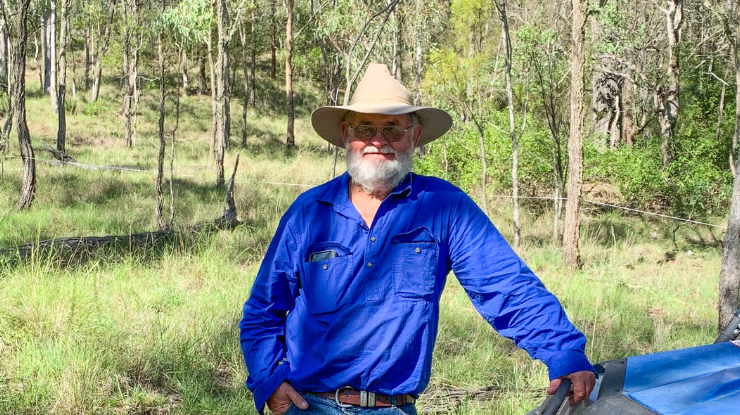 The Cross family run a breeder enterprise, as well as a paddock-to-plate business.
The Cross family run a breeder enterprise, as well as a paddock-to-plate business.
How online support helped deliver practical advice
For South Burnett producers Jenny and Jim Cross, improving land condition, pastures and herd productivity in an environment that experiences both flooding and drought has been a constant challenge.
Since taking over the property in 2010, the pair have engaged in numerous programs and workshops offered by Meat & Livestock Australia (MLA), the Queensland Department of Primary Industries (DPI), their local council and other industry service providers.
In 2014, they expanded their grazing land by purchasing the neighbouring property, before their daughter, Rebecca, joined the business in 2017. Rebecca runs the family’s Bunya Beef paddock-to-plate business, which was recently featured on the menu at a producers dinner hosted by Morrison Hotel, Brisbane.
According to the Crosses, the online legume group delivered by the DPI’s FutureBeef and Queensland Pasture Resilience Program team (see this article) came at the right time for the family.
“Prior to our purchase, open grazing was the norm across both properties – with one dam and a non-permanent creek,” Jenny said.
“This grazing land management strategy was not going to align with our production goals, so we’ve spent the past decade focusing on resting paddocks, investing in fencing infrastructure, increasing water supply, using regenerative grazing to improve native pastures and mitigating weeds.
“Improving pasture resilience felt like the appropriate next step to ensuring better long-term productivity gains.”
Talking the talk and walking the walk
The online producer support group was delivered by a team of DPI staff and this set-up suited Jenny and Jim just fine.
“An online project meant we didn’t need to travel – saving us time and money,” Jim said.
“We also knew, based on our previous experiences, that DPI staff were very good at facilitating positive change and best management practices by walking the walk and talking the talk.”
According to Jenny, the DPI team had the foresight to run sessions at times that suited most participants and recorded the meetings for those unable to attend or those who wished to review session learnings.
“The program itself was well prepared, and the sessions were delivered in a way that didn’t overwhelm us – the DPI staff clearly knew their stuff,” she said.
“During sessions, they offered sound advice that increased our confidence while also facilitating the sharing of producer expertise and, in between, they made themselves available to provide further support by phone or email.”
Theory into practice
The project’s focus on testing and demonstrating sown legume systems in commercial production paddocks was not new to the Cross family.
In fact, before joining the project, they had planted and grown legumes with great success.
However, this all occurred on their previously owned farmland, which was located in a very different environment.
“The soils, altitude and previous land use was vastly different between properties,” Rebecca said.
“Our goal was to utilise the project support group to help us develop a pasture establishment plan that could be used for any environment.”
To begin developing and actioning their plan, the project team first encouraged group members to take account of:
- land use history
- ground cover
- current pasture species
- land and soil types
- historical grazing land management strategies used
- erosion.
Noting this, the first practical step the Crosses undertook was to test their soils.
“Good soil condition is the foundation of successful pasture establishment,” Jim said.
“A soil test will tell you if you need to invest in fertiliser or if you can save your money to use elsewhere – fortunately for us, we received the latter result.”
For the Cross family, fallowing was a key part of their seedbed preparation.
“Since we’d already planned to renew our pastures, we already had a few paddocks we had let rest,” she said.
“We spoke about this with the DPI team and other participating producers during our sessions, and a key takeaway was the benefit two years of rest had on soil condition by encouraging deep moisture retention across the soil profile.
“Our next step was considering whether to use a plough or chemical spray to kill the existing grasses, and whether to prepare the whole area or just strips – which is again where the group sessions came in handy.
“After having a discussion with the others during an online session, we decided our best option was to chemical spray strips of soil to retain some of the land’s native pastures – using rainfall predictions from BOM and FORAGE to guide planting times.”
The DPI team recommended spraying out strips at least 4m wide to keep grass from ‘stealing’ the moisture profile in the soil. The Crosses also sprayed out the strips 10m apart to ensure cattle had access to at least 70% pasture while grazing leucaena.
“After a very good plant strike, we found that the native macropods enjoyed eating our establishing pastures, which we are hoping for a resurgence of this spring if the implementation of electric exclusion fencing can keep it from being grazed.”
Future focus
Moving forward, the Cross family plans to establish a multi-species pasture across their property’s river flats.
This will include a combination of annual pastures, perennials and supplemented native species.
“This seed list was built for us not only by a senior DPI officer, but by our peer producers,” Jim said.
“It’s been a really positive experience, getting insights and advice from both those who do the research and those who put it into practice.
“We see this project as a long-term and continuous investment.
“This new planting will help further the carbon and nitrogen levels in the soil and, in the longer run, support the success of our production goals, which are to improve pregnancy rates, increase herd profitability and reduce carbon emissions.”



